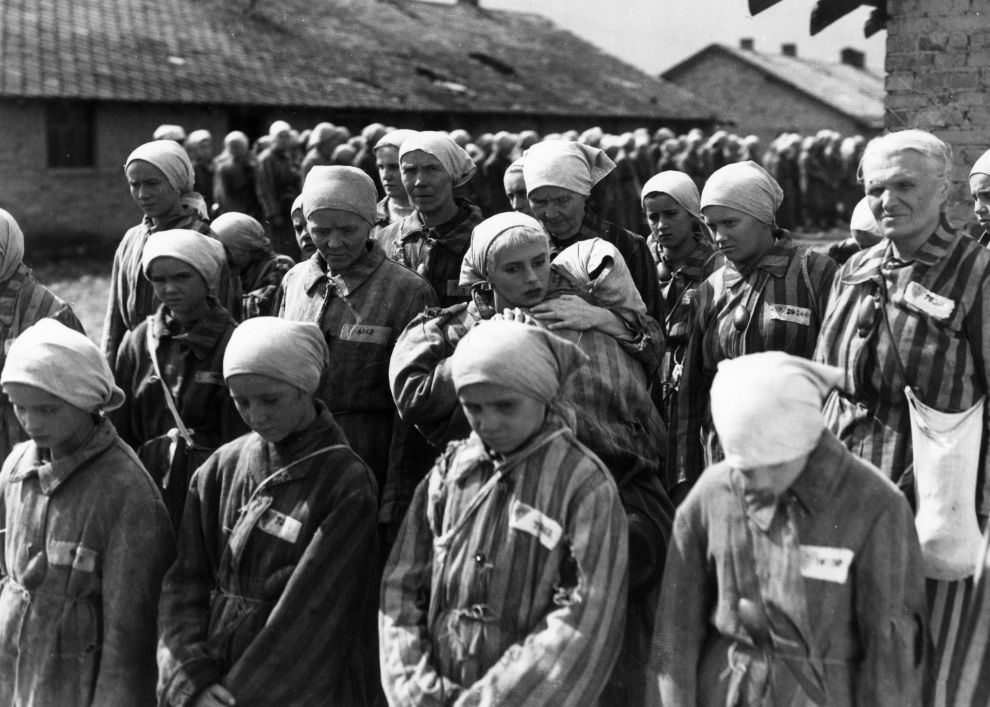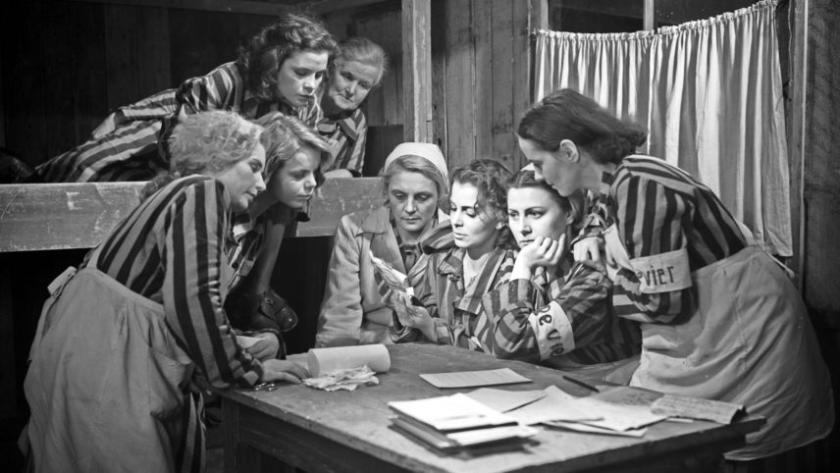Seventy-eight years ago, on January 27,1945, Auschwitz concentration camp was liberated by the Red Army. The iconic images of the ovens with charred skulls and emaciated survivors peering through barbed wire were filmed by Russian cameramen over the following weeks and not on the day itself. And from the very beginning, there was a degree of staging in what the world was shown.
The troupe of children who marched between the electrified fences were dressed for the camera in the striped uniforms of adult prisoners, which they had never worn under the Nazis. The emotional power of those images – one little boy pulls up his sleeve to show the tattooed number on his arm – is undiminished by the touch of artifice. But knowing who is directing the camera, who the intended audience is and what story the film-maker wants those pictures to tell is essential to understanding their meaning.
The first feature film to be made about Auschwitz,The Last Stage has recently been restored and released on Mubi. It’s fascinating to watch today through the prism of its authenticity and its partisan agenda. Its director, Wanda Jakubowska was a communist, sent to Auschwitz when she was caught hiding weapons in Warsaw for the Polish underground. She’d made a feature film (now lost) before the war and was determined that if she survived the camp, she would make a film to show the world what had happened under the Nazis. A script was written in late 1945 with another former prisoner, Gerda Schneider and submitted to FilmPolski, the state cinema agency. Funding was agreed as long as no German actors were cast in key roles and filming took place over the summer of 1947. Many of the cast and crew were former inmates of Auschwitz; returning to re-enact life in the camp for the camera was an extraordinary feat.
 The Last Stage focuses on women prisoners in Birkenau and is infused with Jakubowska’s desire to show how internationalism and female solidarity could win the fight against fascism. Her film was not only meant to document the horrors of the camp, but to be a rallying call for her political beliefs and a celebration of women’s bravery. Prisoner-doctor Eugenia battles to save the lives of women in her care and hide a new born baby. French Jewish women sing La Marseillaise on their way to their deaths. As well as French, we hear Polish, German, Russian, Romany and Serbian spoken in the film. One of the lead characters, Marta Weiss (Barbara Drapinska) is modelled on the Belgian Jewish heroine Mala Zimetbaum, who spoke seven languages and worked as an interpreter while smuggling information to the resistance within the camp. Her extraordinary bravery when facing execution was described vividly by Primo Levi in The Drowned and the Saved.
The Last Stage focuses on women prisoners in Birkenau and is infused with Jakubowska’s desire to show how internationalism and female solidarity could win the fight against fascism. Her film was not only meant to document the horrors of the camp, but to be a rallying call for her political beliefs and a celebration of women’s bravery. Prisoner-doctor Eugenia battles to save the lives of women in her care and hide a new born baby. French Jewish women sing La Marseillaise on their way to their deaths. As well as French, we hear Polish, German, Russian, Romany and Serbian spoken in the film. One of the lead characters, Marta Weiss (Barbara Drapinska) is modelled on the Belgian Jewish heroine Mala Zimetbaum, who spoke seven languages and worked as an interpreter while smuggling information to the resistance within the camp. Her extraordinary bravery when facing execution was described vividly by Primo Levi in The Drowned and the Saved.
But even though The Last Stage was shot in Auschwitz-Birkenau barely two years after liberation, much had already changed. The Nazis had blown up the gas chambers before they left in an effort to destroy evidence. Many of the wooden barracks had been dismantled and the materials used to rebuild local villages. Where there had been nothing but mud in winter and dust in summer, Jakubowska recalled there were now "monstrous daisies"; lush vegetation had sprung up in the soil fertilised by the blood and ashes of the dead. She returned the parade ground to mud.
By the time the former prisoners returned as extras and put on those striped uniforms (disinfected but still blood-stained), they had lost the gaunt, emaciated look familiar from the survivors seen in newsreel footage. Jakubowska lights her leading ladies with the glowing make-up of Forties film stars, it’s a disconcerting incongruity. The Polish actors playing the evil Nazis are almost cartoonish in their monstrous venality and inhumanity. The ending is blatant propaganda and unsatisfying.
This is not to diminish the film’s value, indeed one of the key reasons to watch The Last Stage is to see how many of the scenes Jakubowska created for the camera went on to become iconic images and source material for so many later films about the Holocaust. The orchestra forced to play as the prisoners stagger into the camp from work duty. Newly arrived prisoners being separated into those who could work and those to be gassed – the discreet cut from their abandoned belongings to dark smoke billowing from the chimneys. A prisoner who had lost all hope throwing themselves against the electrified fence. All those searing images are here. A chilling sequence early in the film of a train arriving at night with German soldiers, silhouetted against the white steam with rifles at the ready, was lifted, uncredited, by Alain Resnais for his much acclaimed 1956 documentary, Night and Fog. He used the scene as if it was newsreel footage. In 1959, George Stevens used another scene from The Last Stage in The Diary of Anne Frank as if it was actuality, not drama.
When I first saw The Last Stage in 1990 (while making a BBC documentary about cinema representations of the Holocaust), very little had been written about the film. Much of the information in this review comes from an excellent book, Screening Auschwitz: The Legacy of Wanda Jakubowska's The Last Stage and the Politics of Commemoration (2018) by Marek Haltof.
The Last Stage was acclaimed on its release and played abroad. But there was criticism at home for the film's portrayal of some Polish characters in a negative light – a prisoner passes herself off as a doctor to steal medicines and curry favour with the overseers. Criminal prisoners who became Kapos, put in charge of other prisoners, behave as viciously as the Germans. None of this sat comfortably with the Poles in 1947. But patriotic pride wasn't a driving force for Wanda Jakubowska, it was to bear witness as well as she could.















Add comment